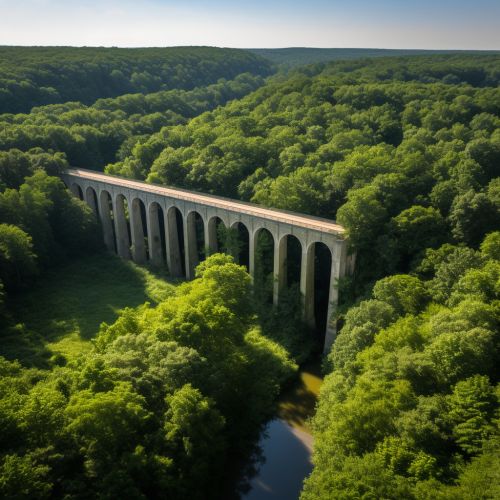Delaware Aqueduct
Overview
The Delaware Aqueduct is the primary water supply line for New York City, transporting water from reservoirs in the eastern part of the Catskill Mountains. The aqueduct is a remarkable feat of civil engineering, being the longest tunnel in the world at 85 miles (137 kilometers) in length. It is also one of the most critical pieces of infrastructure in the United States, providing approximately half of the city's fresh water supply.


History
The Delaware Aqueduct was constructed as part of the New York City water supply system, which was developed in the 19th and 20th centuries to meet the city's growing demand for fresh water. The aqueduct was built between 1939 and 1945 by the New York City Department of Environmental Protection (DEP), and was designed to carry water from the newly constructed Pepacton Reservoir, Cannonsville Reservoir, and Neversink Reservoir to the Kensico Reservoir and Hillview Reservoir near the city.
Design and Construction
The Delaware Aqueduct was designed by the engineering firm of Binnie & Partners, and was constructed using a combination of traditional tunneling methods and the then-new technique of tunnel boring. The aqueduct is a concrete-lined tunnel, with an internal diameter of 13.5 feet (4.1 meters). The tunnel was bored through solid rock, with the depth below ground varying from 600 to 2,500 feet (180 to 760 meters) depending on the local topography.
Operation
The Delaware Aqueduct operates continuously, delivering approximately 600 million gallons (2.3 billion liters) of water per day to New York City. The water flows by gravity from the reservoirs in the Catskills to the city, with the drop in elevation over the length of the aqueduct providing the necessary pressure to drive the flow. The operation of the aqueduct is monitored and controlled by the DEP from their operations center in Valhalla, New York.
Maintenance and Repair
The Delaware Aqueduct has required significant maintenance and repair work over its lifetime. In the 1990s, it was discovered that the aqueduct was leaking, with an estimated 35 million gallons (130 million liters) of water being lost each day. This led to the Delaware Aqueduct Bypass Tunnel, a major repair project that involved the construction of a 2.5-mile (4-kilometer) long bypass tunnel around the leaking section of the aqueduct. The bypass tunnel was completed in 2020, and the original aqueduct was taken out of service for repairs.
Impact and Significance
The Delaware Aqueduct is a critical piece of infrastructure for New York City, providing a significant portion of the city's fresh water supply. The aqueduct also has a significant environmental impact, as the reservoirs in the Catskills that feed the aqueduct are located in a region of significant natural beauty and ecological importance. The operation of the aqueduct and the management of the reservoirs have a major impact on the local ecology and the recreational use of the region.
